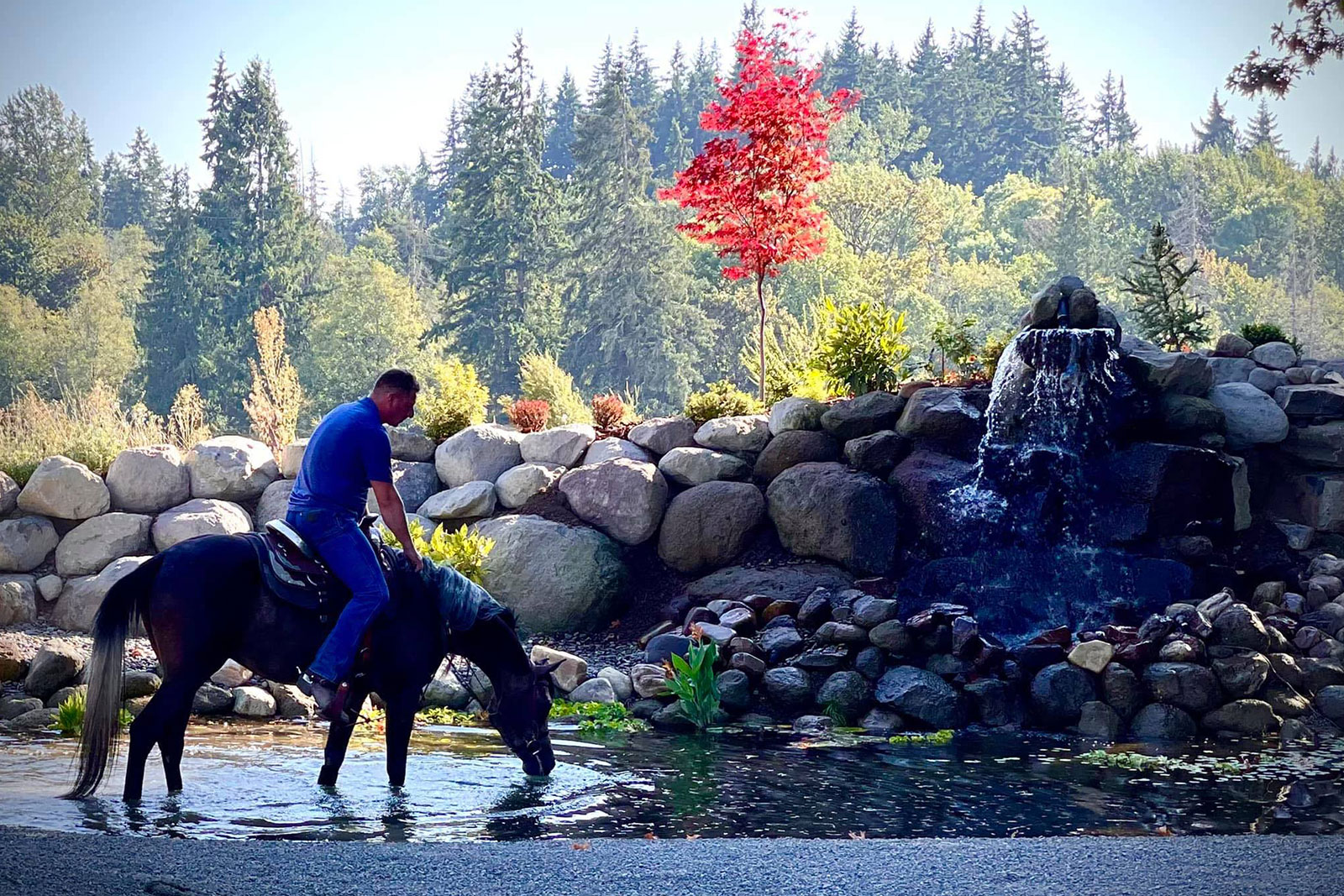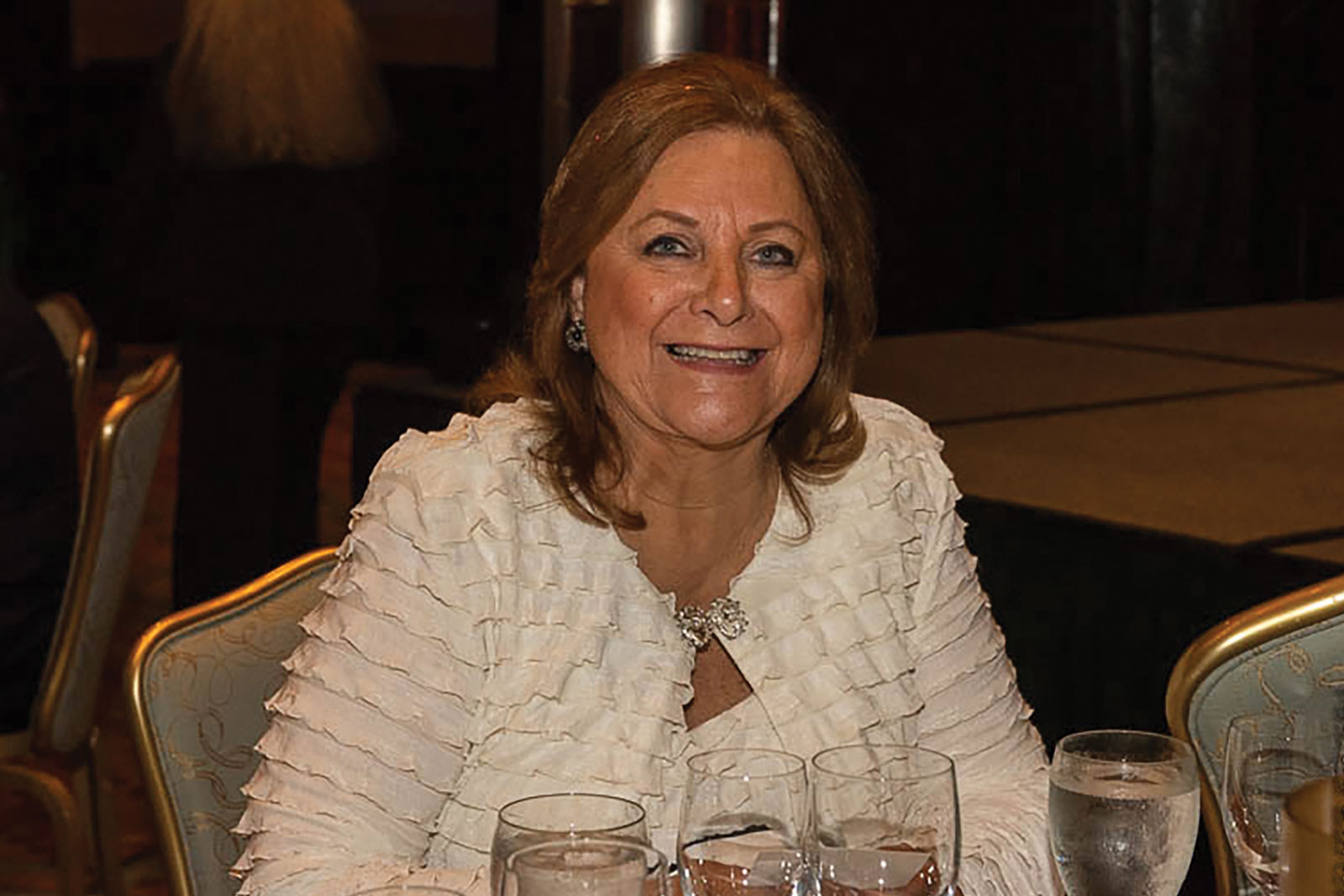Ally Nelson sat down with Lukas Bardue to talk about his incredible program where he develops young horses to become functional all-around horses.
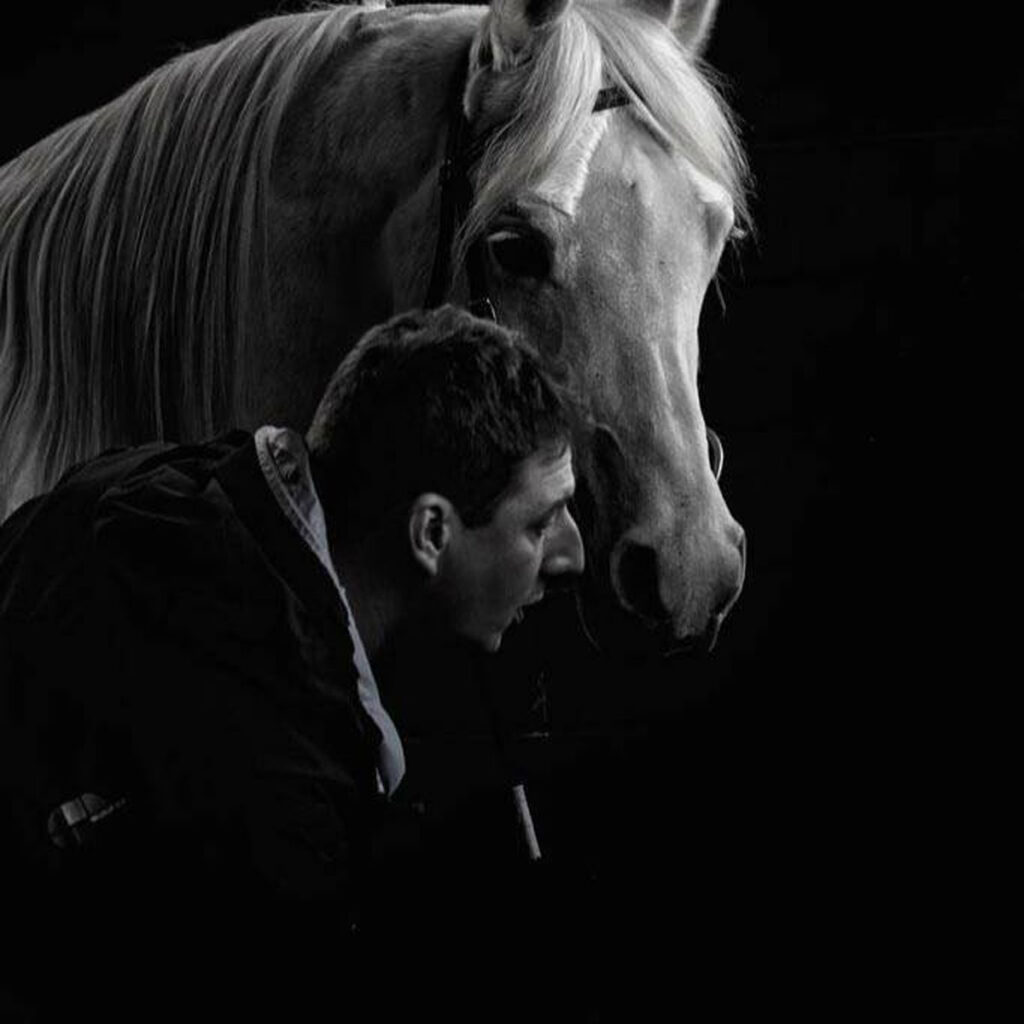
What is the name of your program?
Running Start Arabians (unofficially).
Please describe to us the mission of your program.
First and foremost, to promote the breed and its capabilities. Arabians have a long history of being a family horse that could do everything. Yet we seem to forget that about them, and in turn, it makes them bored. I really want to show the versatility of the breed.
What first introduced you to the Arabian horse?
I was young, and at the time, my aunt Robin worked as a trainer for John Wheeler in Red Bluff, California. He had just died from a heart attack, but my aunt wanted me to come out to the ranch to see before everything was sold off. She took me out to one of the pastures with some grain and yelled out for a stallion named Mystr Serafix. In the distance, you could see this fantastic grey horse running across the pastures through the willow trees up to the gate. At that point, I had never seen anything like it and did not even know something like this existed. That was when the breed took over part of my heart, and it might also be why I have an attachment to greys today.
I know that you work with many different breeds of horses. What makes the Arabian horse stand out in your program?
At the Kentucky Horse Park, we worked with 25 different breeds; at Arabian Nights, we worked with at least 10 breeds. Most recently, I have worked with Friesians, Andalusians, and Arabians. It was interesting because all these acts in Arabian Nights started out with a specific breed. The Lip drill was all Lipizzans, reining acts were Quarter Horses, the hippodrome was done on Canadian Drafts, and so forth. Without fail, when those other breeds started failing or aging out, they would be filled with Arabians. The show would have Arabians pulling a chariot, doing the reining act, Lip drill and High School acts, and most importantly, the Liberty Act. Arabians always stood out above the rest because they were hardy, strong, beautiful, reliable, and easy keepers. None of the other breeds held up to the daily routine of working day after day with life and interest still in their expressions. My program wouldn’t necessarily work with other breeds simply because other breeds do not crave the same level of mental stimulation, activity, and engagement.
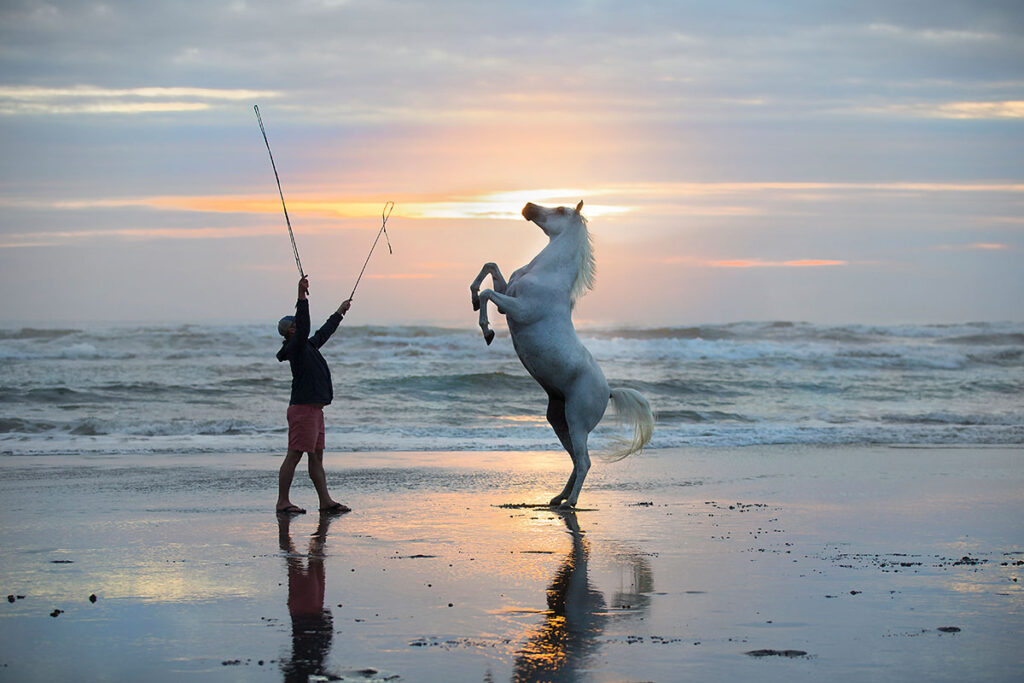
Photo by Thomassen Photography
Why do you feel that what you are doing with these horses is essential to the industry as a whole?
We have an industry that constantly needs to be reminded of what we are working with so it can maintain a healthy future. These reminders that the Arabian can do all, and appeal to all sorts of people will help maintain the breed. We need Arabians to maintain functionality and remain appealing to everyday people. I think by me showcasing the fact that I take my show horses camping after a regional show or put them in a cart or ride in a parade I am doing my part. I do not think I am the only one out there that thinks that. In the last 10 years I have seen a shift in a positive direction for brains, movement, and versatility.
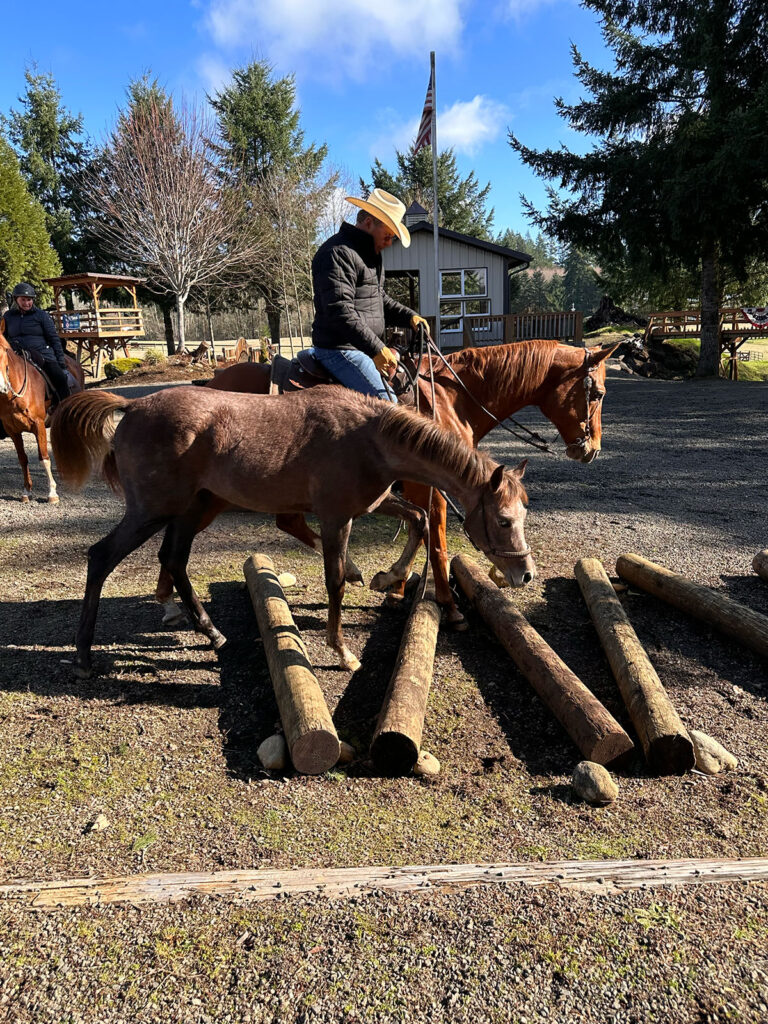
Within your program, your Arabians are quite versatile. Tell us a bit about the different training styles you have.
This all depends on the horse as I bring them up as babies. I customize what they are exposed to and monitor them so they don’t get overworked.

Year 1
After weaning and having had a few months to adjust to their new life without mom, they get started with low-level in-hand trail for about three months. This will include walking them across bridges, teeter totters, rope bridges, through water, and pole obstacles. The level of the trail course depends on how well the baby takes to it. During this time, they will get turned out to pasture daily with a buddy and come in at night to be stalled by themselves. They also learn to pony off of my seasoned horses their first year. After completing this, they get turned out to pasture.

Year 2
They get handled regularly but will not be stalled. They turn out with different-aged geldings, so they learn to socialize. At this point, I decide whether to geld or keep them intact, but either way, they are living out together. This year is also when I introduce wall work and start laying the foundation for liberty work. Towards the end of the second year, they go back into full in-hand trail training. This time, however, extreme elements are introduced, such as rapid water, balance beams, and vertical obstacles. When they finish, they go into training to learn to pull a cart. They are never even hooked up in the first three months, as most of this is groundwork in long lines. When they get hooked up, they really learn to use their bodies, and it teaches them patience.
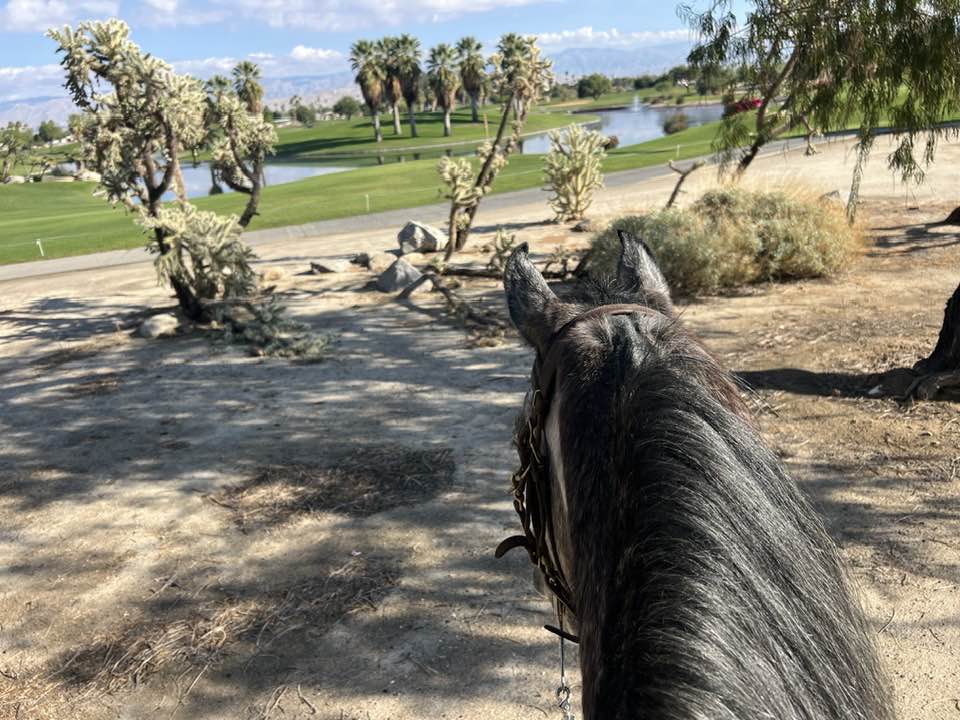
Year 3
This year is all about the rider and exploring. It is not only about walking, trotting, or cantering in circles. At this point, getting on their backs is no big deal, and neither is steering or stopping, as they have learned all that in a cart. I start taking them trail riding, maybe ponying them the first time out to see how they do. Once I have successfully gone on a trail ride without them being scared, I start taking them camping. This will include three days on a high line, which includes daily trail rides with multiple obstacles like water crossings and logs. I also take them to Palm Springs, California, where they are ridden four times a week in the wash or the hills of Murrey Canyon. This is where they get exposed to Big Horns and other wildlife. These are substantial mental growth and coordination opportunities as trail riding provides a non-void training atmosphere. They learn to be brave and trust, as well as learn to bend off the leg and pay attention to their feet. The order in which this happens depends on their actual age.

After they have been competent under saddle, they start working to find their niche and become all-around good horses. Last show season, Ragazzo Dolce “Reggie” entertained people at a regional competition, marching and bowing in the aisle after taking a reserve championship in Western Pleasure Junior Horse. The following weekend, I took him camping for four days. During the camping trip, another horse broke its bridle, so Reggie gave up his for the rest of the ride.
Some of the training techniques we teach include:
- Driving
- Reining
- Trick Training
- Liberty
- Cows
- Camping
- Extreme Trail
- Drill Horses for the Black Pearl Friesians Dance Troupe at Horse Expos
- Showing main ring Hunter Pleasure and Western Pleasure
- Dressage
This may not seem like a big deal, but when you start adding them together and really build that relationship to this level with these horses, it makes your interactions with them seem somewhat human and, in a significant way, therapeutic.
Lukas already has the next three years of his program planned out. He only works with one or two horses per year and currently has five in the program. To learn more about Running Start Arabians, visit their Facebook page or email Lukas directly.



